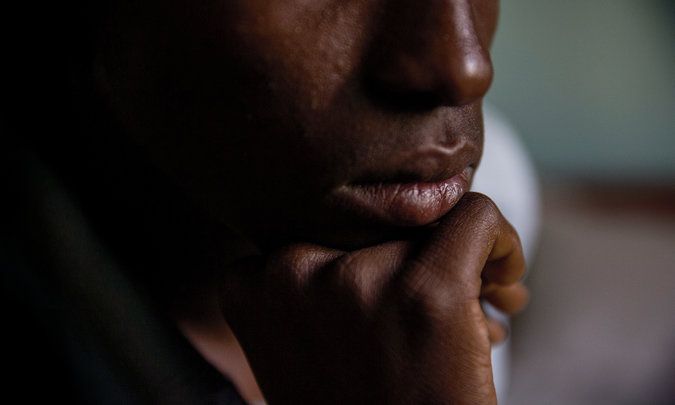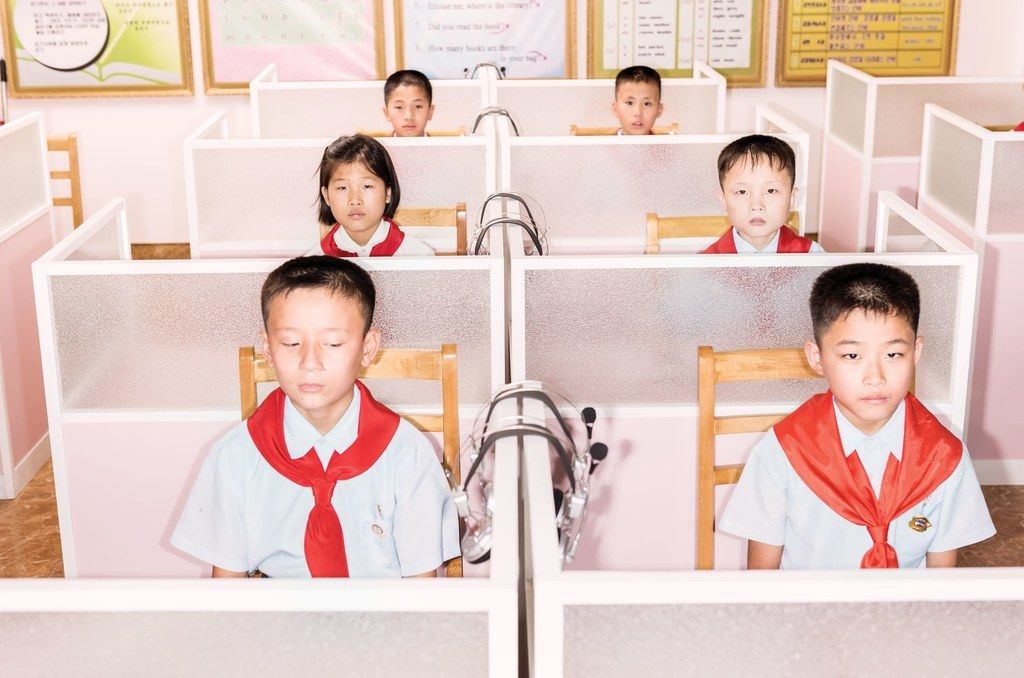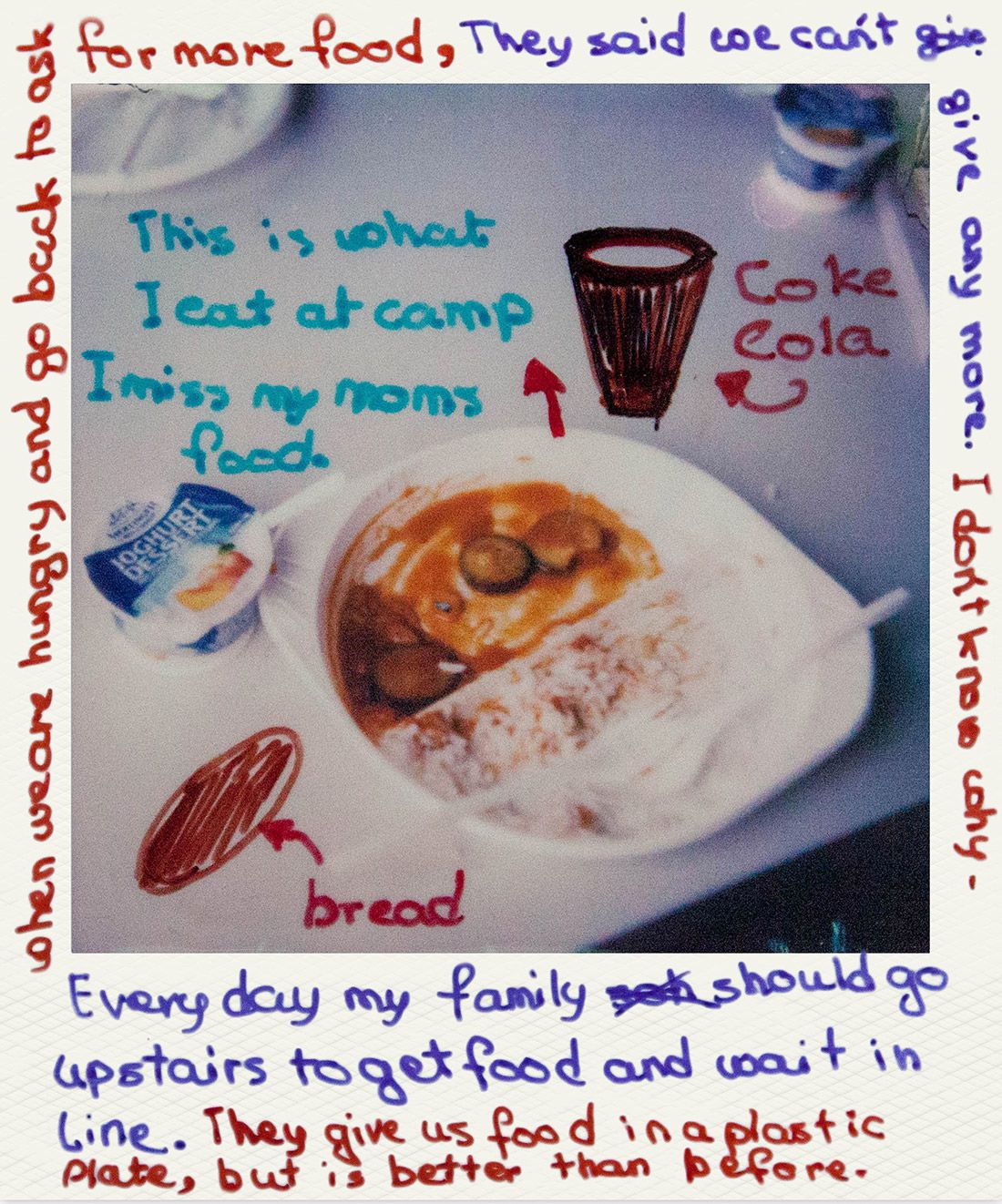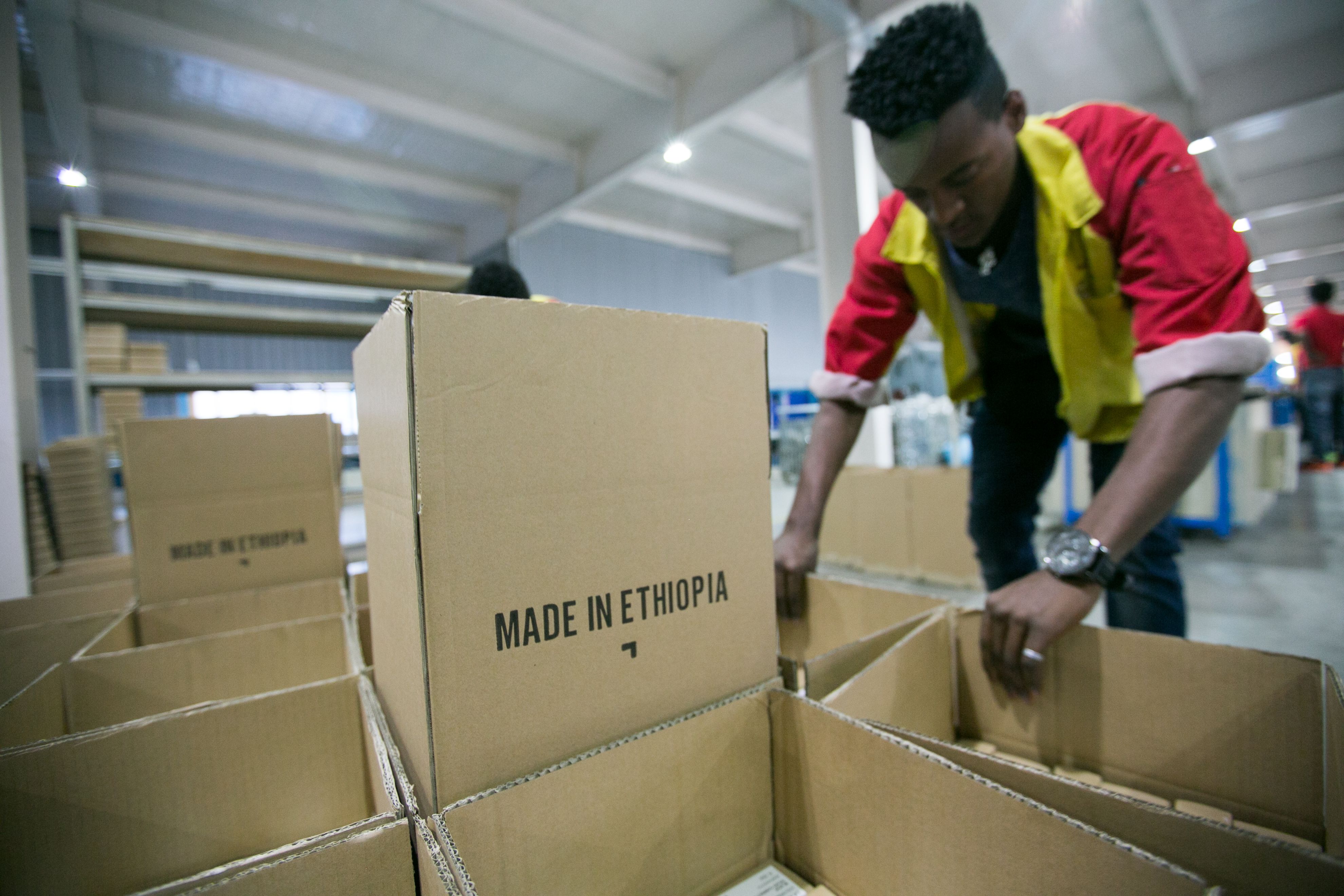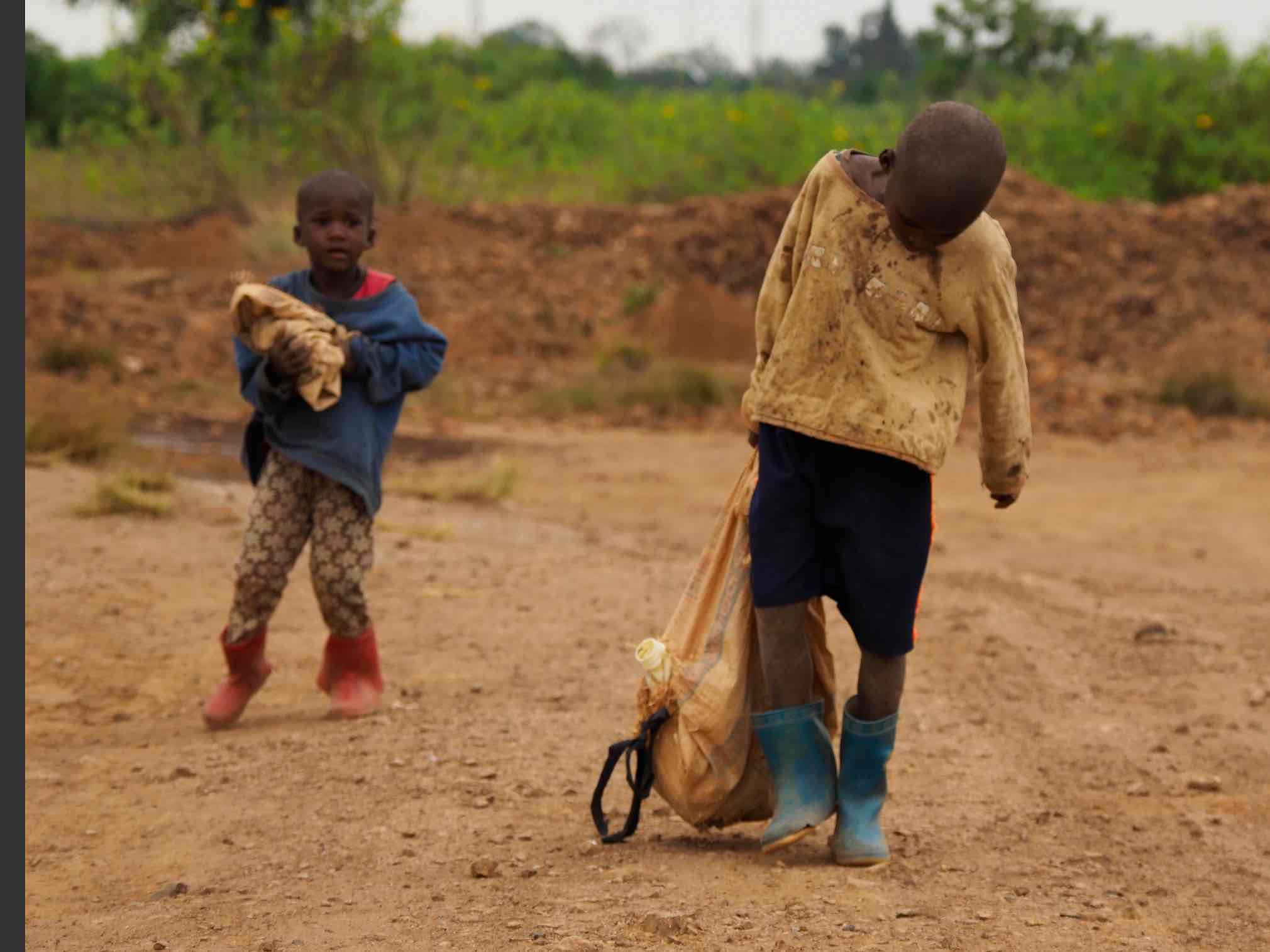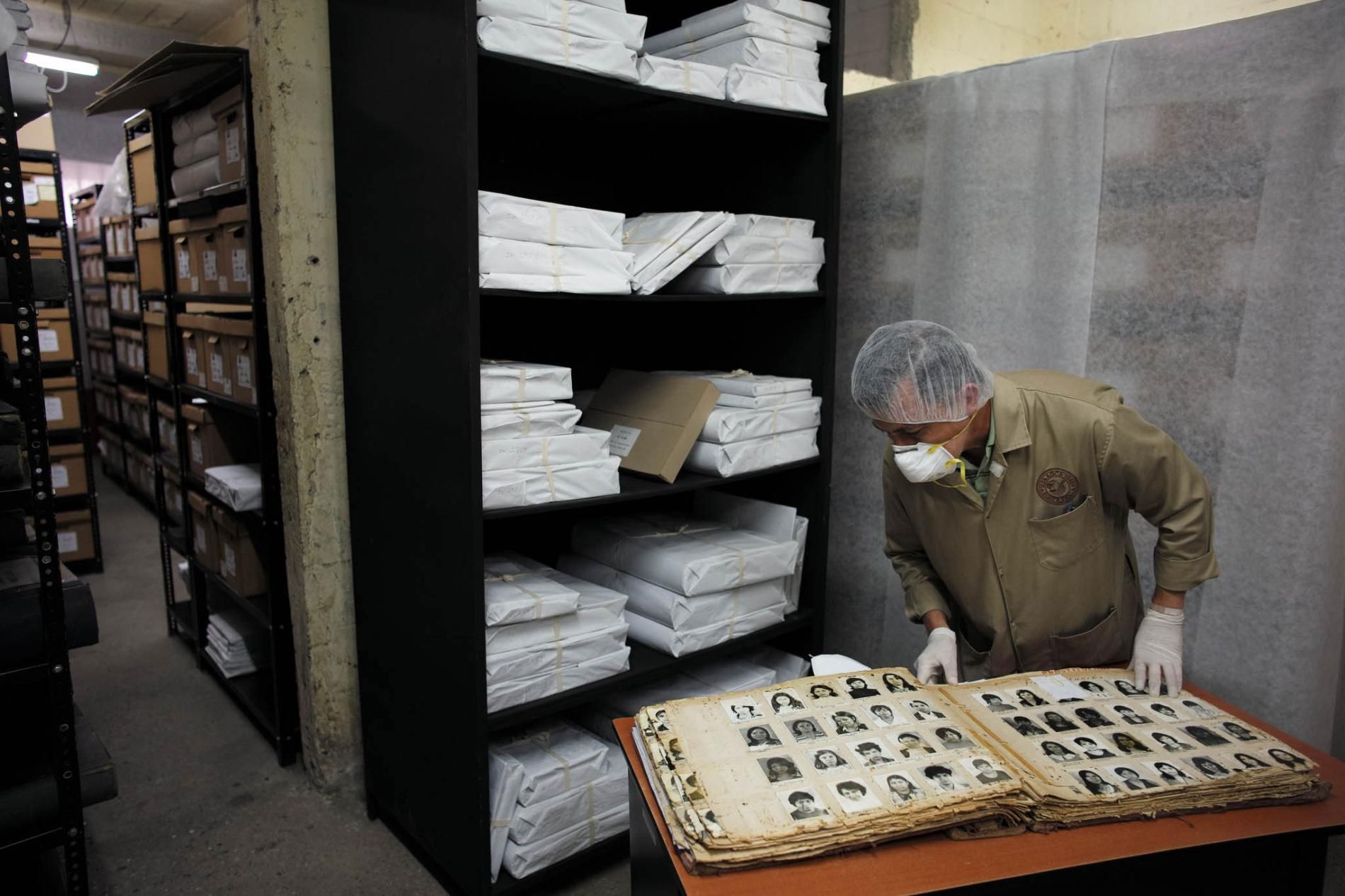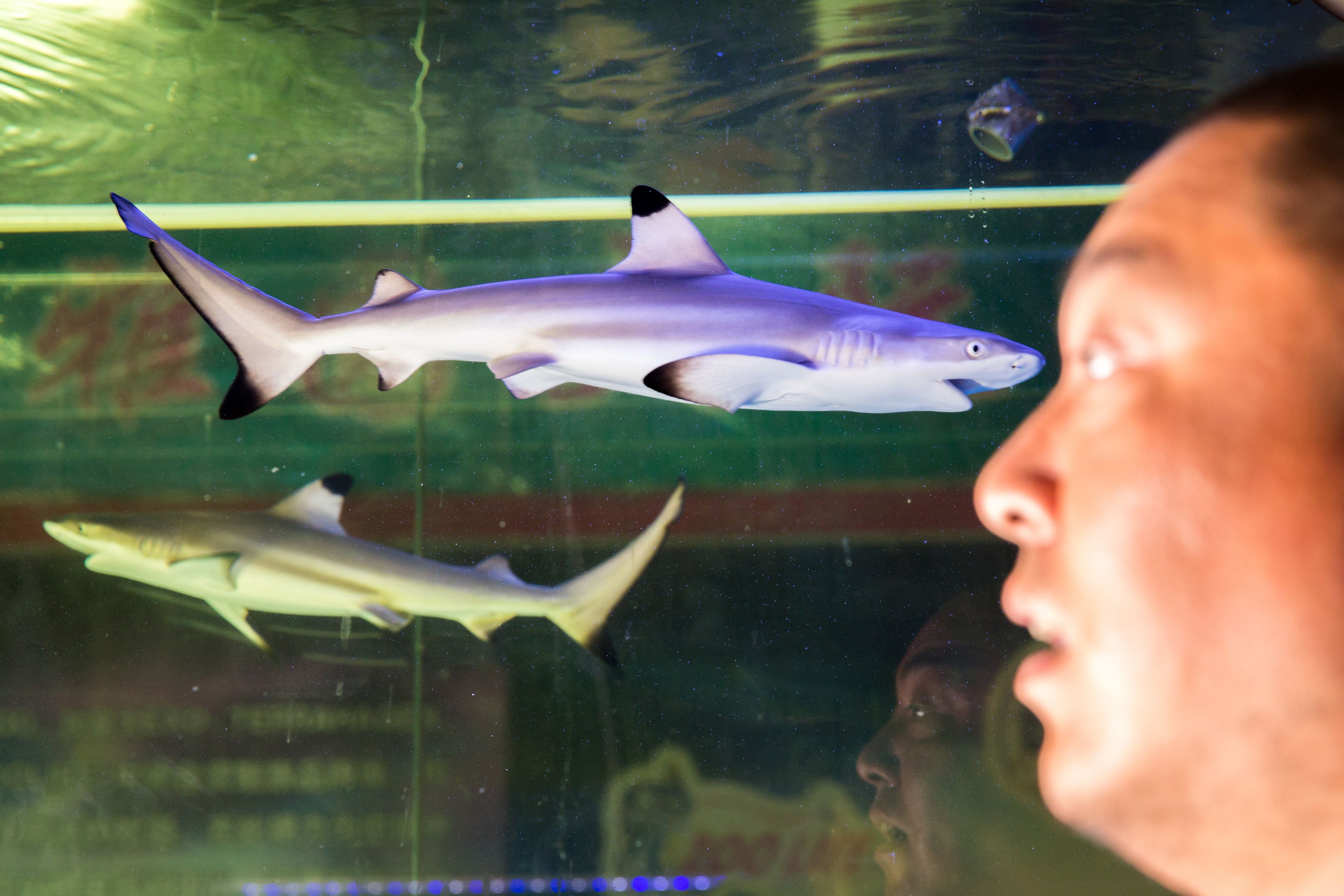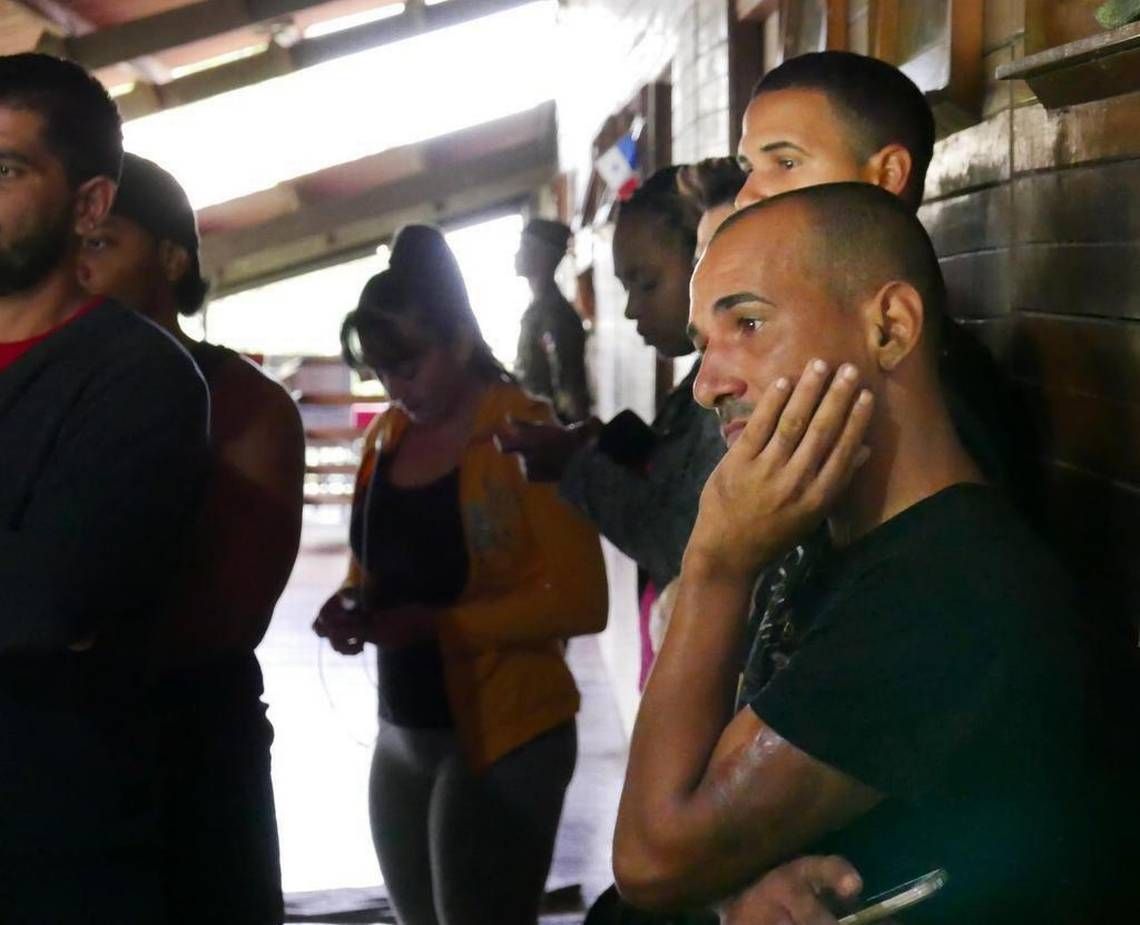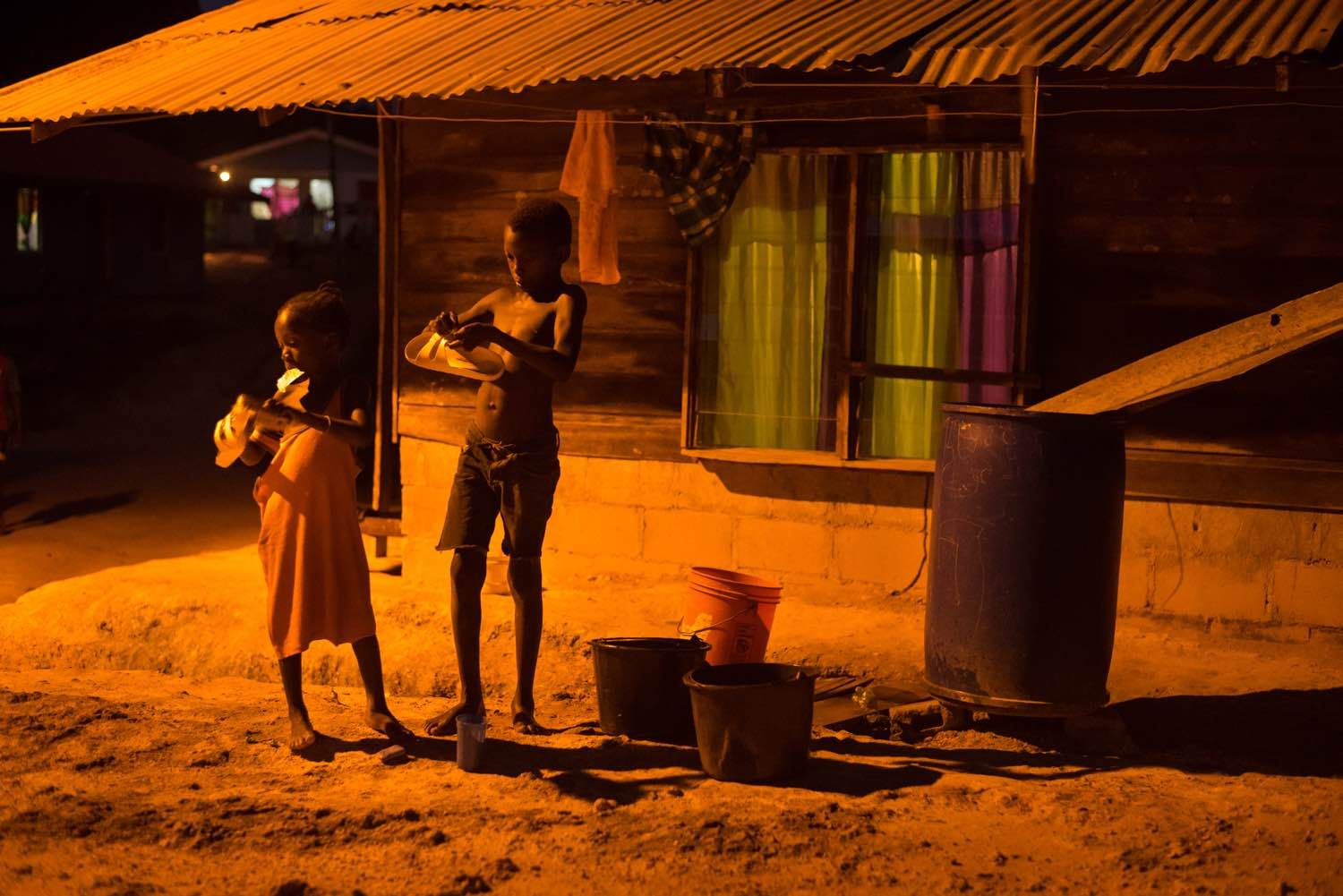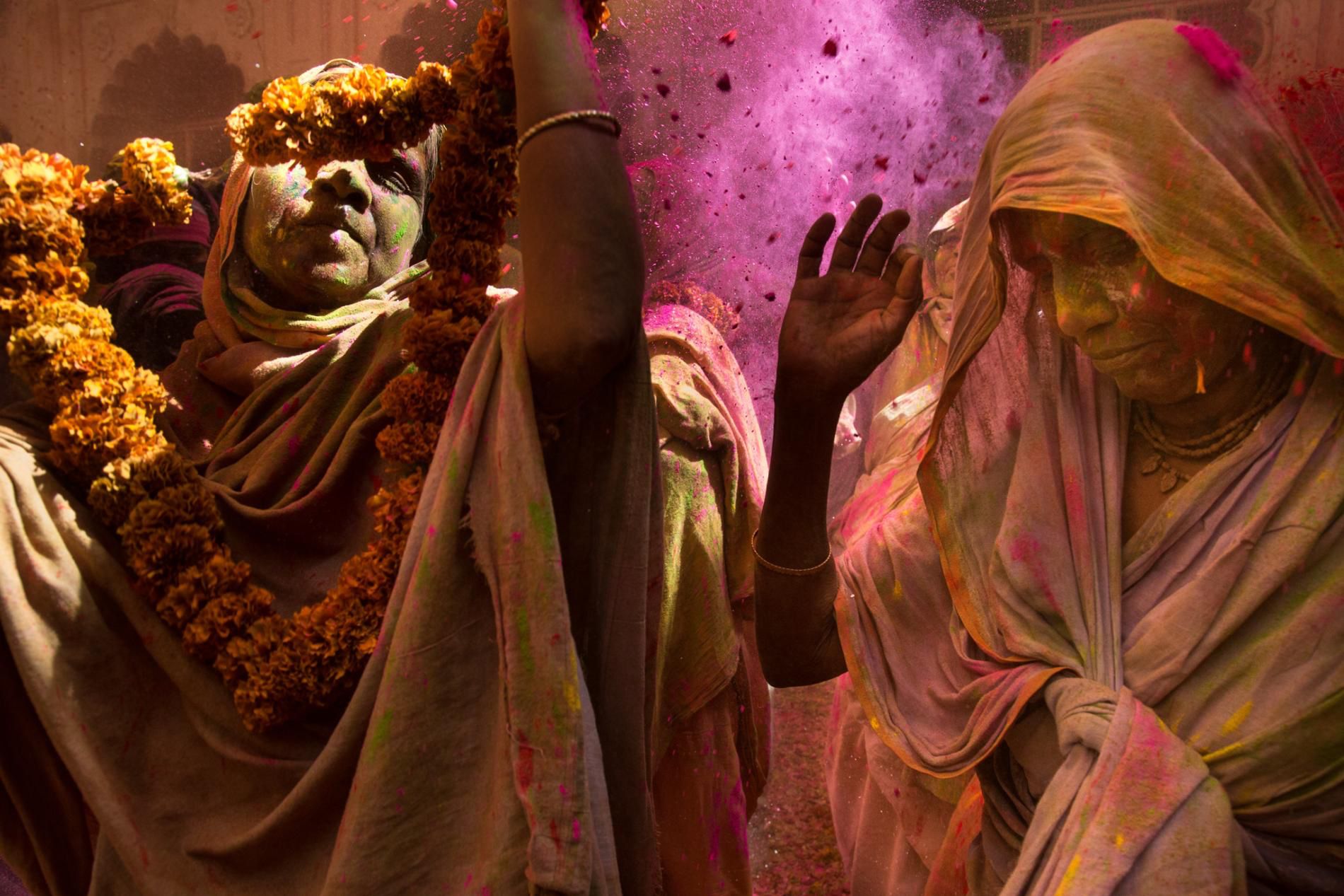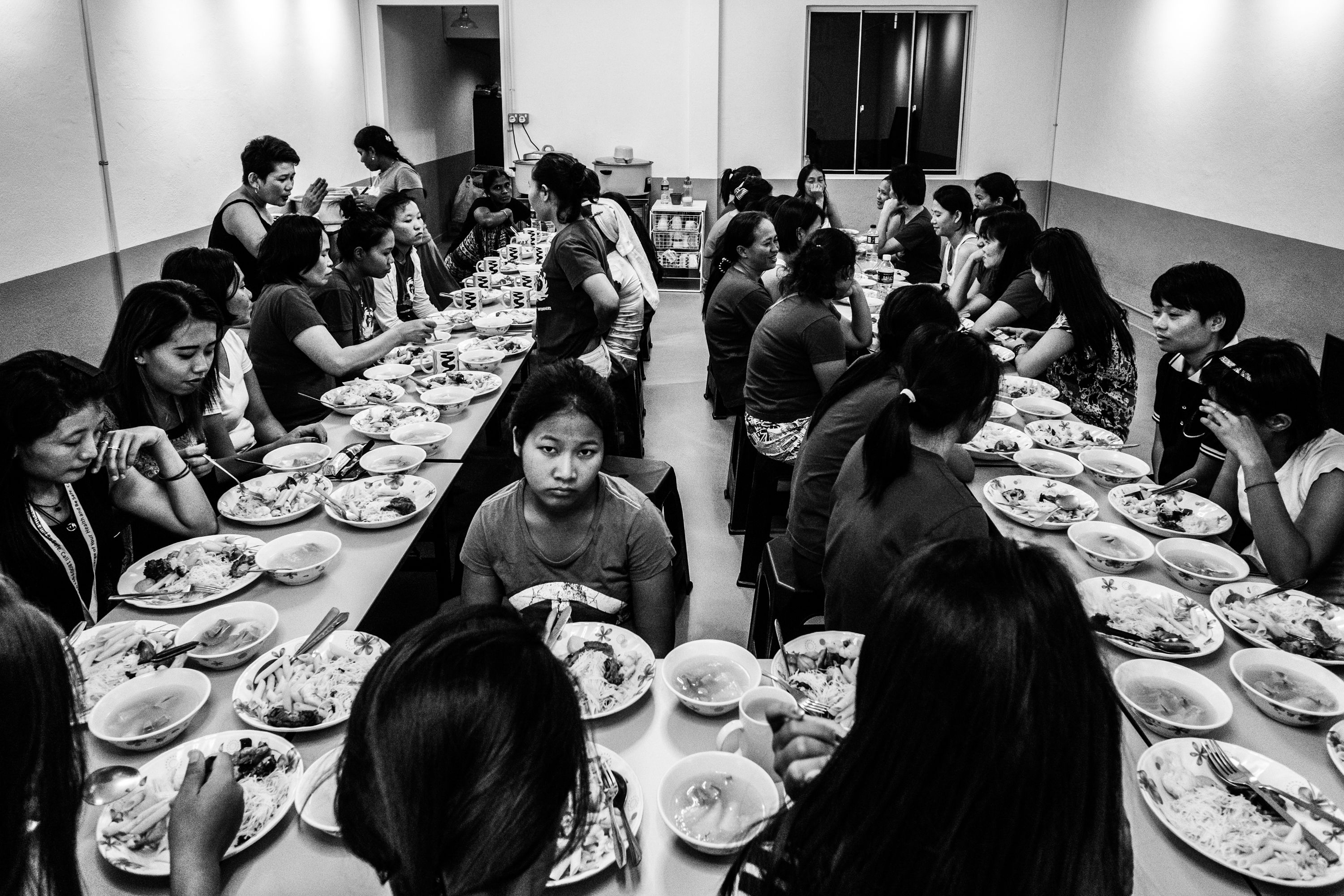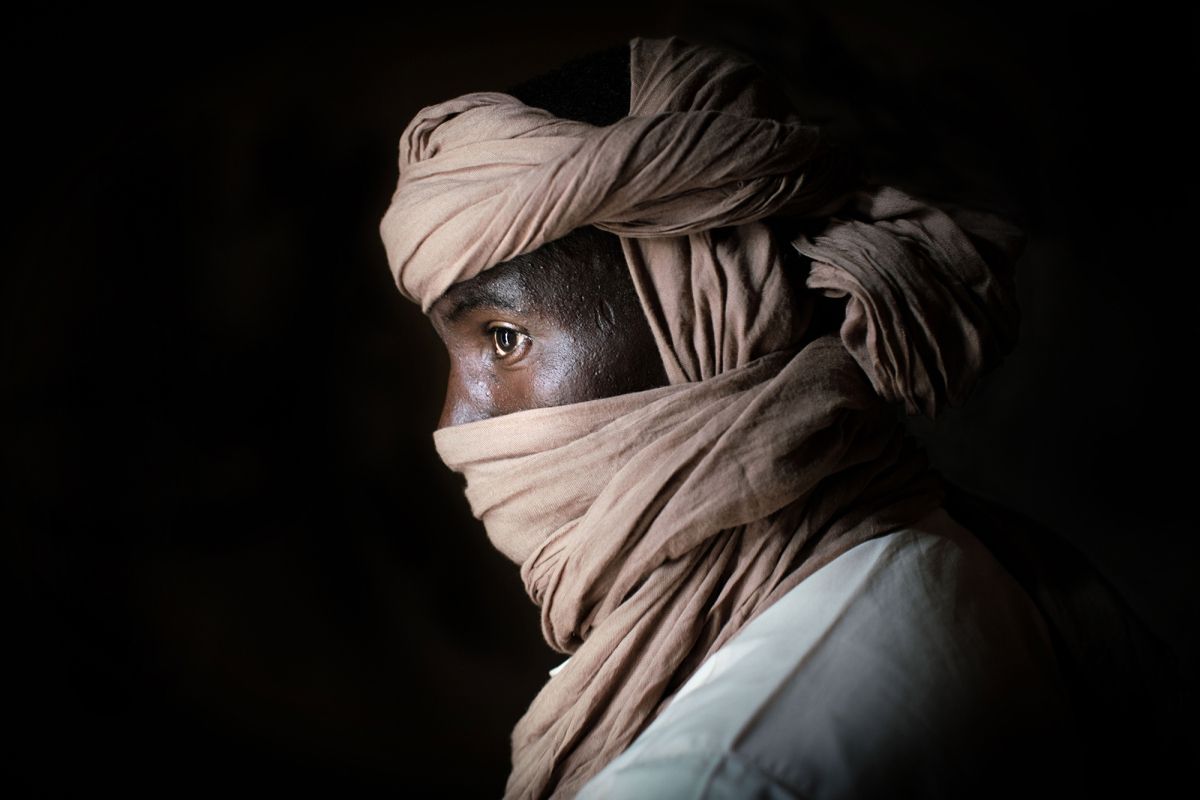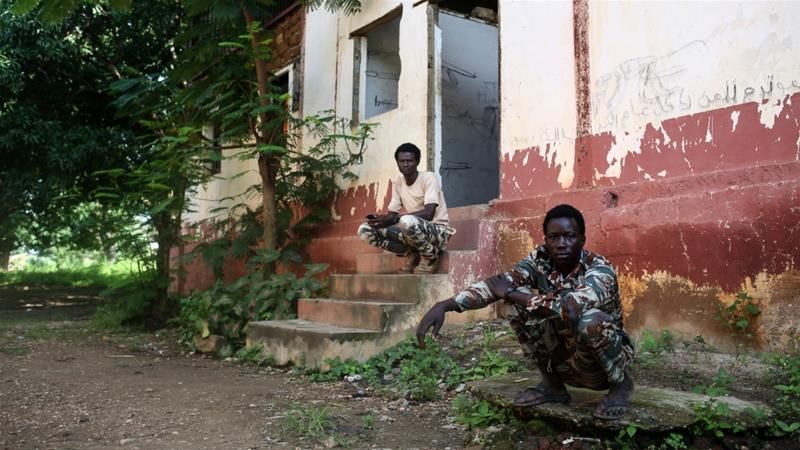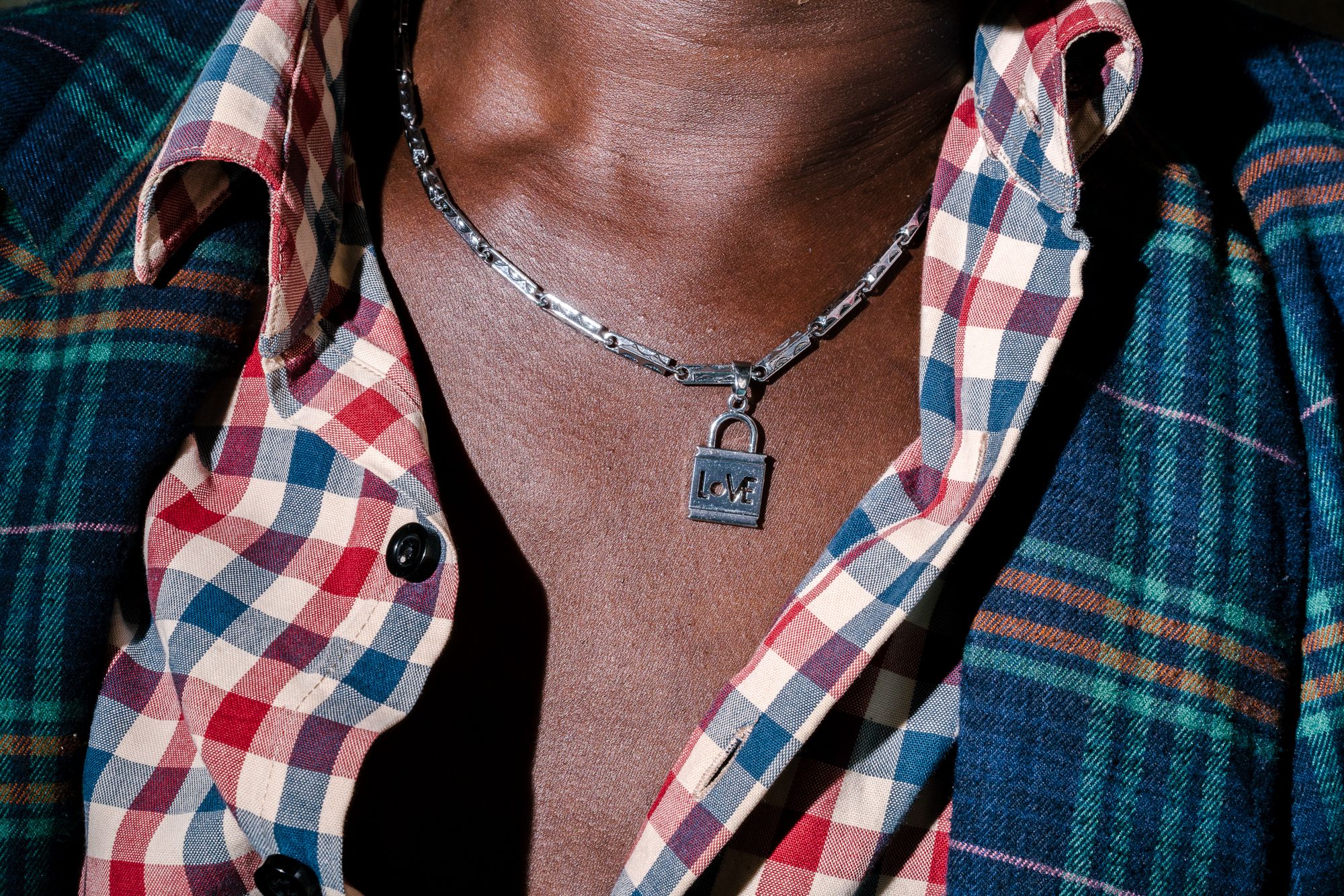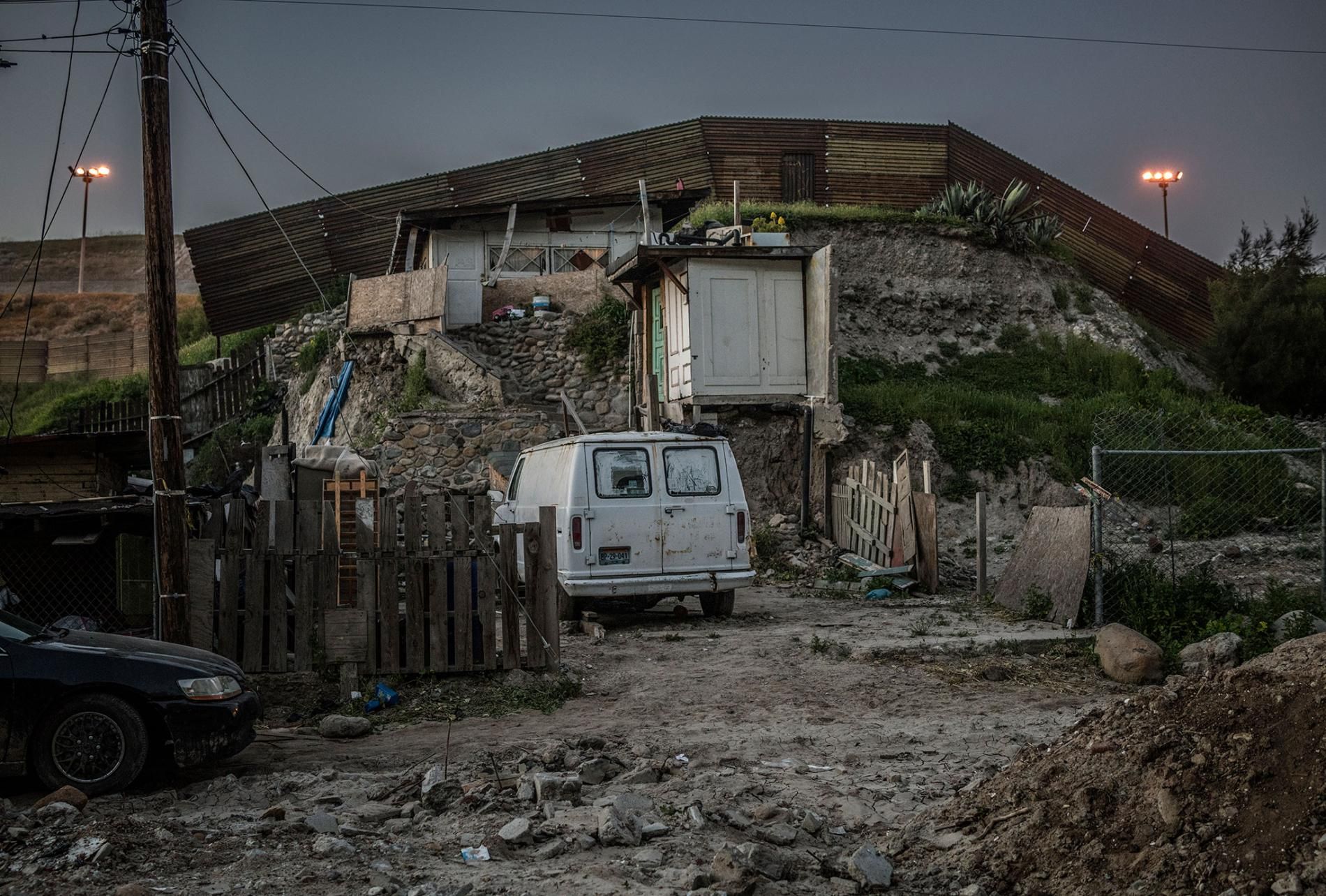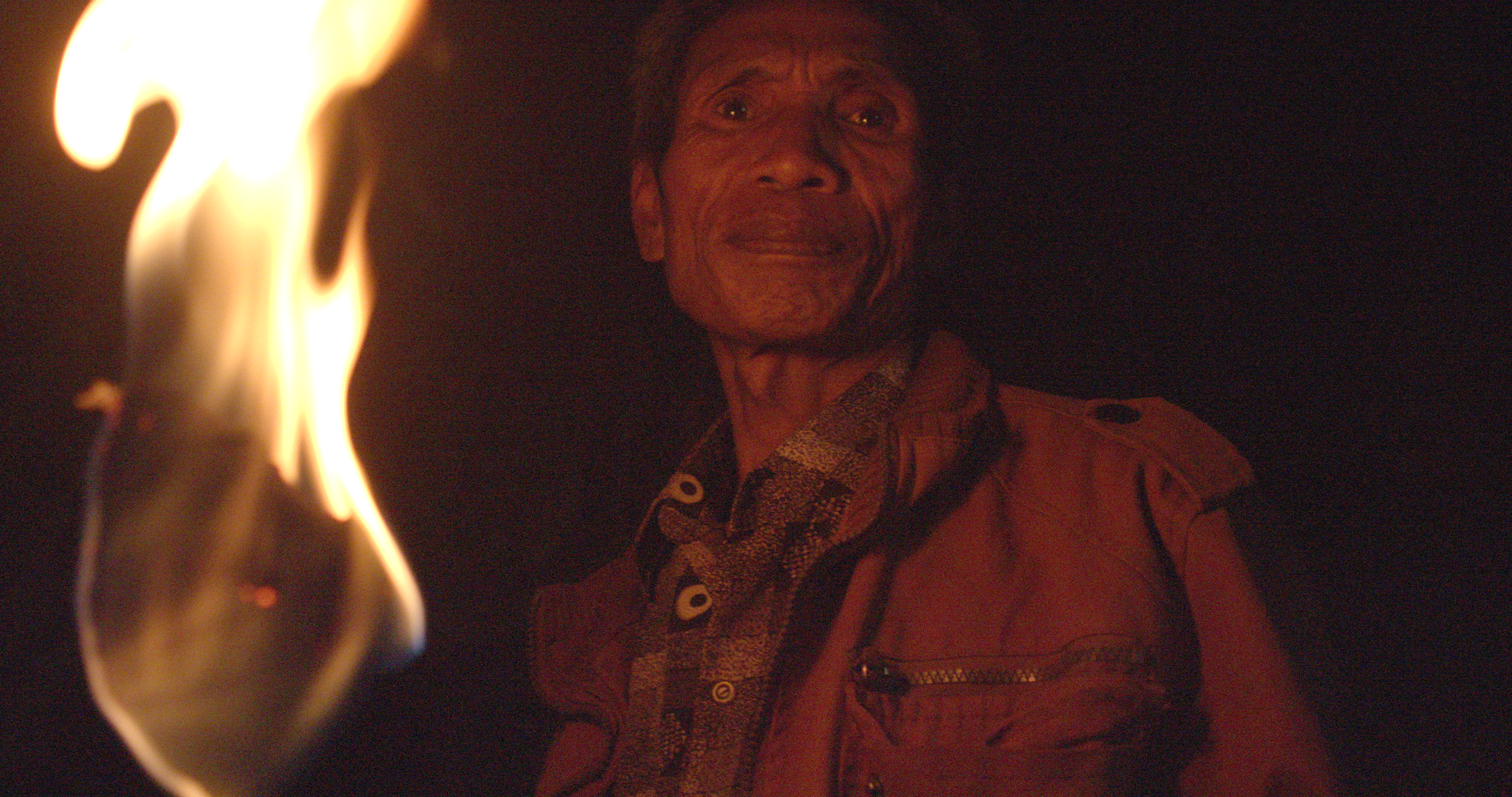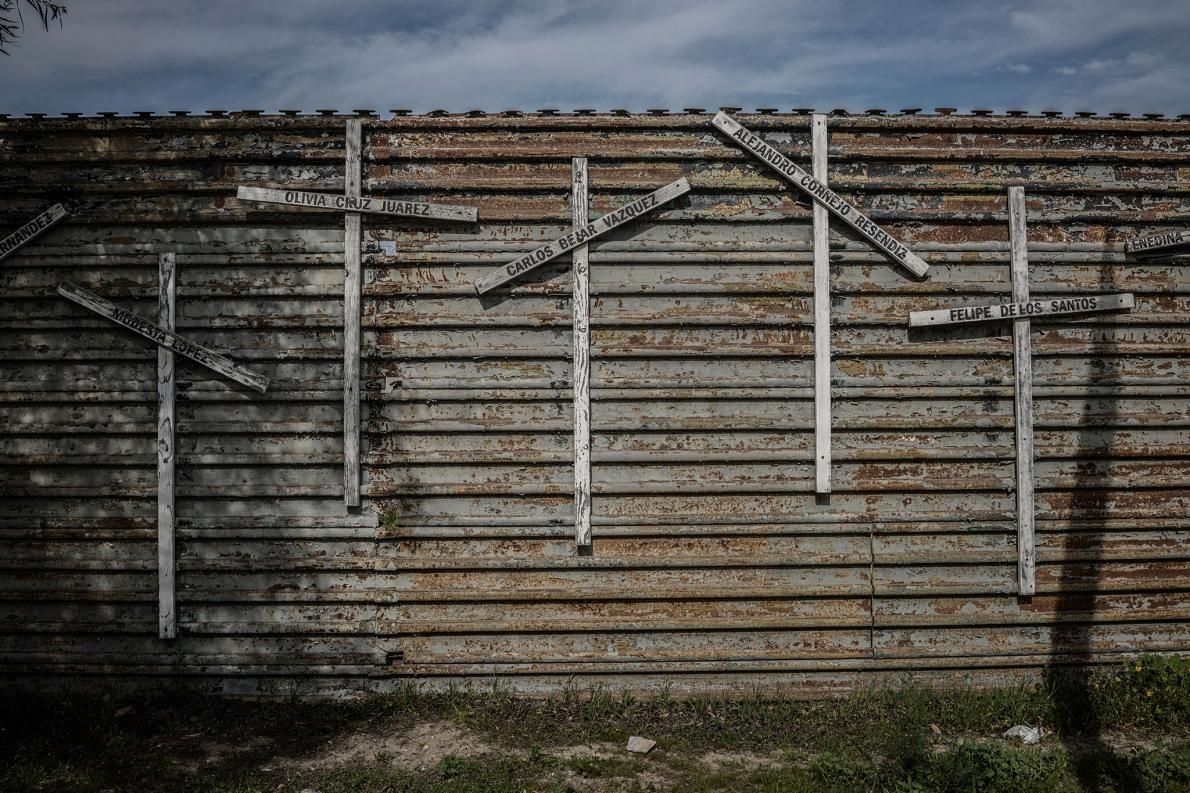The refugee crisis in Europe, the children of Boko Haram, and widows living in India: these are just a few of the topics documented by our journalist grantees this year. To wrap up 2017, each of our staff members chose their favorite image from over 150 projects. Take a look at our selections below.
Jon Sawyer, Executive Director
"As I read Sarah Topol’s harrowing account in The New York Times Magazine of boy soldiers abducted into Nigeria’s Boko Haram I kept returning to the lead image by photographer Glenna Gordon: a two-page spread showing just the nose, lips and chin of an unnamed boy, his face resting on a curved hand. The image conveys the ongoing burden of an unspeakably brutal experience—without betraying or exploiting the boys themselves."
Nathalie Applewhite, Managing Director
"There is something completely surreal about this image by Max Pinckers from the Pyongyang Orphans’ Secondary School in North Korea. On one hand the students look like school children anywhere...except for the absolute rigid order and symmetry–and the separation between them. Pinckers captured both the curiosity and fear in their eyes so it comes as no surprise that, during the visit, one boy asked, 'Why is America trying to provoke a war with us?' Pinckers’ series is the perfect companion to Evan Osnos’ piece, both featured in The New Yorker this fall, after they gained unique access inside the hermetic kingdom we hear so much about, yet about which we understand so little. Together they provide a candid, rare, and unexpected view from inside a country where, as Osnos has noted, their questions reveal far more than their answers."
Eslah Attar, Intern
"When children are caught in the middle of war, they are robbed from their childhood and forced to grow up all too soon. Milad is a 14-year-old Afgan refugee who is now split between two worlds–his past home in Ghanzi, Afghanistan, and his uncertain future in Dusseldorf, Germany. As Milad tries to move forward with his new life, memories of the life he once knew plague his thoughts. 'A Postcard Home' is a collaboration between photojournalist Diana Markosian and Milad. Together, they share what the reality of war and refuge look like for many displaced children–whether it be experiencing a new culture, celebrating a different holiday or eating new foods."
Jeff Barrus, Communications Director
"Africa has long been a target for colonial powers seeking to extract its resources and exploit its people. The great untold story of 2017 is how China, the world’s rising superpower, is the latest outside civilization to colonize the continent. Noah Fowler’s photographs for the Los Angeles Times show how Ethiopia is being leveraged as a source of cheap labor for a country whose standard of living has risen too high to keep prices low, and how China’s 'investment' is leading to rapid cultural changes. The stamp 'Made in Ethiopia' on American-branded shoes may suggest growing economic development, but it hides the truth—that Ethiopia is the latest stop in globalization’s endless hunt for cheap labor."
Jeff Bartholet, Senior Editor
"Squint a bit, bend the imagination, and these two kids could be dragging bats and mitts home from a losing effort on the ballfield. But they have no bats and mitts, and the dejected looks on their faces reflect not a losing game, but a contaminated childhood. Photographer Larry Price documented the lives of people like Abraham, 6, and Acili, 4, as part of a project on the people of Kabwe, Zambia, considered the world's most toxic town. Men in Kabwe scavenge rocks from the lead slag and tailings of a long-abandoned mine; women and children collect and crush rocks to sell as gravel. Measurements of lead in the blood of 246 children of Kabwe showed all tested above safe levels—and most were more than nine times higher."
Hannah Berk, Education Coordinator
"Lynn Johnson's photo captures an archivist at work in Guatemala's Historical Archives of the National Police (AHPN), tasked with cataloging, preserving, and analyzing evidence of forced disappearances and other atrocities committed during the 36-year civil war. This story is not new. The war came to a formal end in 1996 and this archive has been in operation since 2005. Like AHPN director Gustavo Meoño calls the archive itself, however, journalism can be 'a place of conscience.' The traumas, legacy, and even legal proceedings of the civil war live on, and this story from Johnson and Michelle Nijhuis is a reminder of how training a journalistic eye on history and its present-day ramifications can uphold accountability and preserve memory beyond the news cycle."
Jin Ding, Marketing Coordinator
"Ever since I went abroad, I couldn’t count how many times I had to explain to someone that the new generation in China are not so into eating shark fins. But apparently, from Sean Gallagher’s reporting, now the new trend is to get sharks as pets in my home country. Why can’t we leave those wild species alone, my fellow Chinese? Not only off your dinner table, but also not in your fish tank."
Katherine Doyle, Associate Editor
"The abrupt end in January 2017 of the Cuban Adjustment Act, also known as 'wet foot, dry foot,' marked a turning point in the journeys of Cuban migrants to the U.S. For decades, this policy had granted Cubans who reached the U.S. permission to stay and pursue expedited citizenship. For thousands of Cuban migrants living and working informally in Latin America, hoping to one day gain entry to the United States, this announcement would change their lives irrevocably."
Tom Hundley, Senior Editor
"Pittsburgh-based Alcoa spent the better part of the 20th century extracting profit from Suriname’s seemingly endless supply of bauxite. But now the mines are exhausted and Alcoa is pulling out, dealing a major blow to one of South America's most fragile economies and leaving behind an environmental catastrophe. Strip mining for bauxite tends to turn the natural environment an unnatural and garish shade of burnt orange—orange lakes and streams, orange foliage, orange villages. Stephanie Strasburg’s image of children cleaning their shoes for school in the orange glow of a street light is a glimpse into the future as multinational mining conglomerates, mainly from Canada, China, the U.S. and Australia, continue to expand aggressively into the developing countries of Africa and South America where environmental laws are either non-existent, unenforced or easily circumvented."
Rebecca Kaplan, Education Specialist, Mellon/ACLS Public Fellow
"Indian widows defy social stigma by celebrating Holi. This is part of a larger effort by women, aid groups, and activists in India and other countries to combat laws and customs that turn women into pariahs after their husbands die."
Fareed Mostoufi, Senior Education Manager
"Cassandra Vinograd’s image of Elizabeth, a South Sudanese woman who gazes at the camera from a UN base after fleeing fighting in her community, is one of those images I just can’t shake. There is so much feeling trapped behind that gaze. I wonder what she’s thinking, what she has seen and what she wants the world to know about how war has touched her life. While traveling with Vinograd to DC schools last spring, I learned that the crisis in South Sudan has led to unspeakable violence, entirely avoidable famine and a growing threat of hopelessness. The students and I also worked with Vinograd to understand how this conflict directly connects to our lives and our country’s history. We are forever changed by that experience and her work."
Karen Oliver, Office Manager
"As my friends gather with extended families this winter to celebrate their important holidays, many will post photos on social media of crowded tables that will look like this shot by Xyza Bacani. This image isn’t a holiday celebration—these women are in a shelter in Singapore for migrant workers who have run away from their employers, and are far from their families. As the daughter of a migrant worker and a migrant worker herself, Bacani devoted more than three years documenting the lives of illegally trafficked workers in Hong Kong, New York and Singapore. The images she captured and the stories she reports are amazing."
Ann Peters, University and Community Outreach Director
"Smugglers. Refugees. Bandits. Soldiers. Migrants. Nameless and faceless categories. Nichole Sobecki’s portraits from Niger change that. She shares brief vignettes about Adji, Moussa, Ali and others – similar to the photos by other journalists we support covering the stories of refugees named Taimaa, Iyman and Ghazweh. When we know their names, their stories draw us closer: Take Adji. He’s 32. He’d been driving migrants to Libya for nearly 15 years. It nearly cost him his life a year ago. He left that work for the sake of his wife and children, he says. I wonder whether he’s found new work, a career. Or whether the pull of even higher profits these days may draw him back to the smugglers’ world."
Kamran Rahman, Intern
"This photo has the curious ability to spark a dialogue between subject and viewer. The men’s presence is undeniable—so much so that it almost feels awkward to be around them without saying anything."
Jordan Roth, Multimedia Producer
"Details are incredibly important in any story, but especially when the safety of the subjects is at risk. In Jake Naughton's project, An Uneasy Situation for LGBT Ugandans, he does an incredible job of telling a story visually with this in mind. I found this image striking. It's beautiful, simple, and to the point."
Steve Sapienza, Senior Producer
"The border wall. Mexicans call it El Muro de Verguenza, The Wall of Shame. James Whitlow Delano’s approach to this controversial topic is original, revealing, and humanizing. How much do we know about the those on the other side of the wall? Who are they? Why do they live there? James Whitlow Delano has worked for three decades to seek them out and listen to the stories to have tell us. This epic and reflective body of documentary photo work builds understanding amid the caustic calls to 'build the wall.'"
Kem Knapp Sawyer, Contributing Editor
"Lung Ki explores the Thong Lor cave In Laos. The cave, now home to bats and butterflies, provided refuge to Lung Ki and other Laotian families during the Vietnam War, at a time when the U.S. dropped 270 million bombs on the country. Lung Ki will be featured in American University student fellow Erin McGoff's film “This Little Land of Mines” about the 80 million unexploded ordnance (UXO) in Laos. As Erin reports, the UXO continue to kill and maim innocent civilians—40 percent of victims are children. Lung Ki’s piercing eyes and weathered face, illuminated by his torch, speak to the pain he has endured over the last over the last 50 years—and to the U.S. legacy."
Mark Schulte, Education Director
"Neil Brandvold’s image of the Jordanian border town of Ar Ramtha at sunset has a ramshackle urban beauty. As with much crisis photography, the appeal of the photograph conceals an underlying unease, the tension of tens of thousands of refugees looking out to the horizon just as the three kids and the motorcyclist in the frame do, wondering what tomorrow brings."
Kayla Sharpe, Campus Consortium Coordinator
"Over one hundred suicide attempts in an indigenous Canadian town sparked brief but important conversations about the social issues affecting the Attawapiskat Nation. As our society struggles to reconcile itself with the theft, genocide, and assimilation that was wrought against indigenous populations in the Americas, documentary photographer David Maurice Smith, paints a picture of a people whose history of intergenerational trauma is often as overlooked as it is lasting. Smith captures Canada's natural beauty in a way that suggests both isolation and healing while also focusing on the vibrant community that is forged through its strong culture, traditions, and hope for the future."
Joan Woods, Capital Campaign Director
"Tear down the walls!! This is a visual reminder for me about the walls that divide us. This one just happens to be on the U.S./Mexico border."

